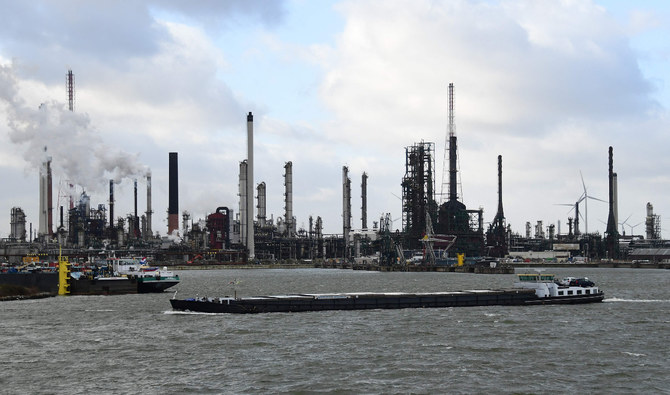
- ARAB NEWS
- 04 Jul 2025

Even though in their latest meeting, OPEC+ ministers agreed to maintain the planned monthly increase of 400,000 barrels per day in March, prices remained firm while crude prices continued their backwardation.
Bullish market sentiment is likely to continue, thanks to persisting supply outages and low oil inventories while the US-Russia tensions continue to add a risk premium to crude prices.
Some signs are now emerging, however, that suggest a turning point in prices may be on the horizon. Oil prices could soften since some temporary drivers that are supporting high prices are falling away as we head into the second quarter of the year when refineries worldwide start their maintenance, leading to a lower demand for crude
Winter is drawing to a close, which will lower demand for natural gas and, in turn, demand for diesel and fuel oil as cheaper alternatives for power generation and industrial use. The arrival of spring will also lower demand for heating oil.
As for consumer sentiment, it is currently in the doldrums, falling to its lowest level since November 2011. This does not bode well for sustained demand under high prices. Furthermore, a US-Iran agreement could be reached earlier than the market anticipates, which could allow for the gradual lifting of sanctions as soon as April.
Crude oil prices were supported by the EIA weekly report showing a draw in US crude oil and distillates stocks. Refining margins are recovering as demand continues to recover faster than supply, providing a boost for US refiners who just two years ago were struggling to break even on a barrel of oil. Crude exports from Russian seaports are poised to dip by almost 120,000 bpd in February.
Capacity constraints will become more limiting in the coming months, raising concerns in the market. Genuine risks have already raised demand for inventory.
India’s gasoline and diesel sales slumped in January as the third COVID-19 outbreak pushed people back to their homes, slowing consumption.
Oil markets will be vulnerable to disruptions, capacity constraints and geopolitical risks, but supplies will be increasing in 2022, leading to an expected build-up of surplus in the market as it is projected by industry sources, which will likely put pressure on prices
US shale crude and condensate growth accelerated to 0.7 million bpd this year, after two years of decline.
Global gas markets are painting distinctly different pictures as supply uncertainty in Asia supports prices but European markets are starting to see downside potential on the horizon.
Mild weather in Europe and frigid forecasts for the US will drive price behavior in the coming days.
With no sign of a diplomatic breakthrough to a potential conflict in Ukraine, Europe is engaged in diplomacy to see where it could acquire LNG supplies if Russian piped gas flows are cut off.
Speculators are betting on higher prices because they see strong demand while supply struggles to keep up. Some experts argue that oil is on its way to $100 or higher, but there is no guarantee that this will not lead to demand destruction.
Higher oil prices can have an indirect impact on oil demand by stalling the economic recovery from the pandemic and fueling inflation. Elevated levels usually take a toll on household and business budgets, ultimately slowing economic growth.